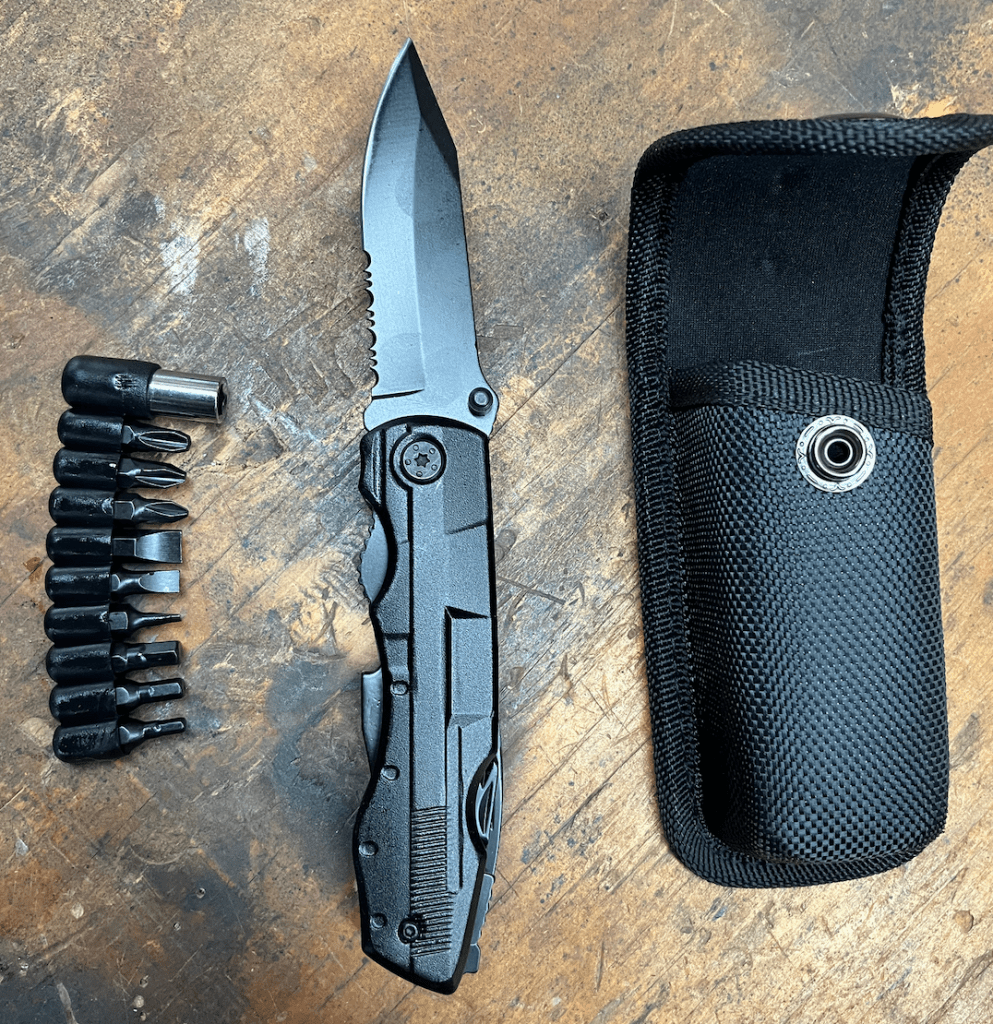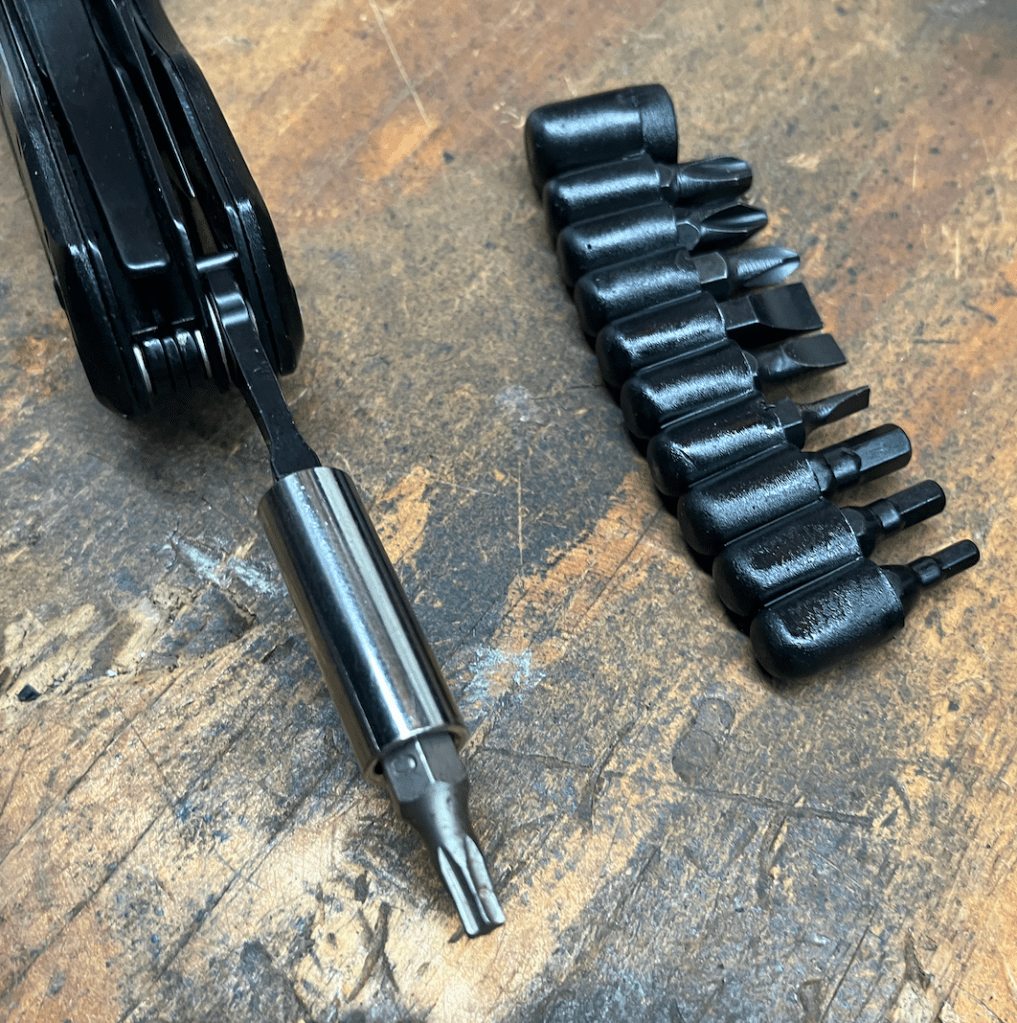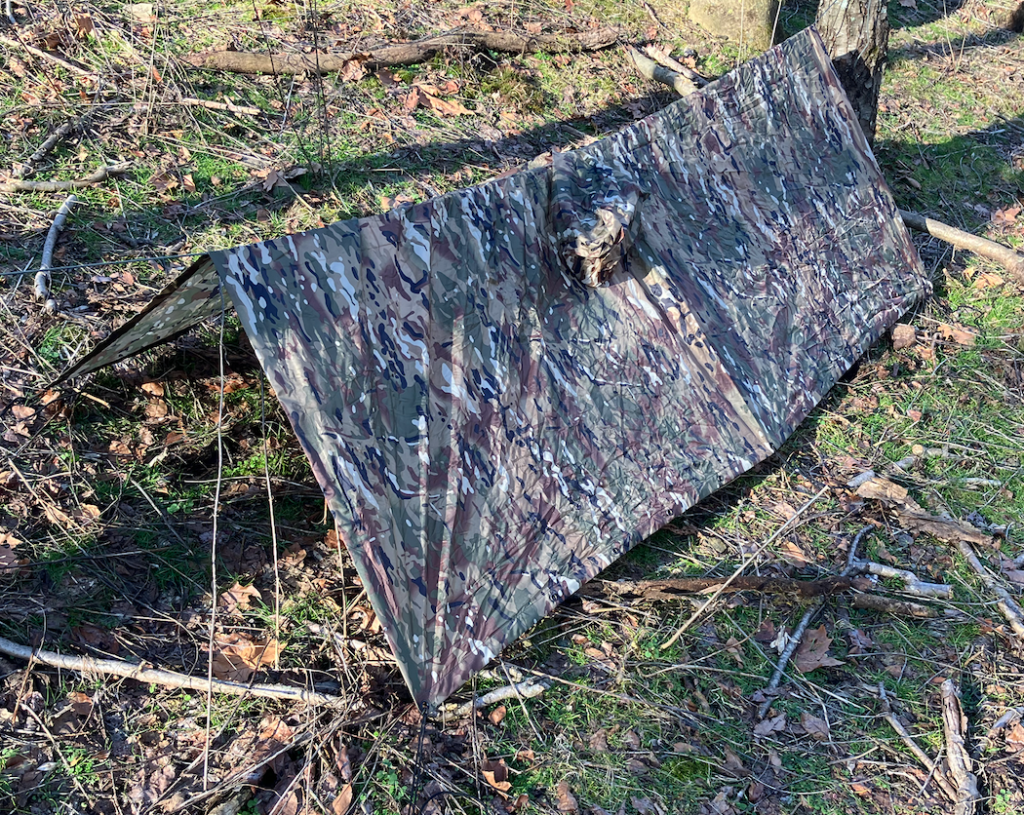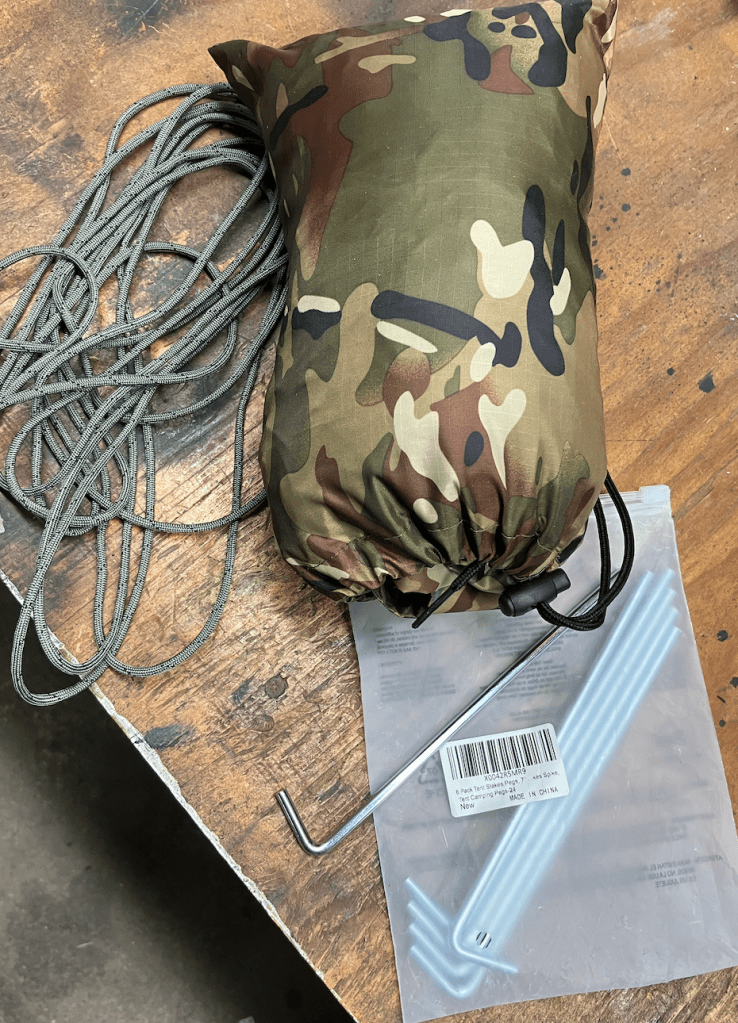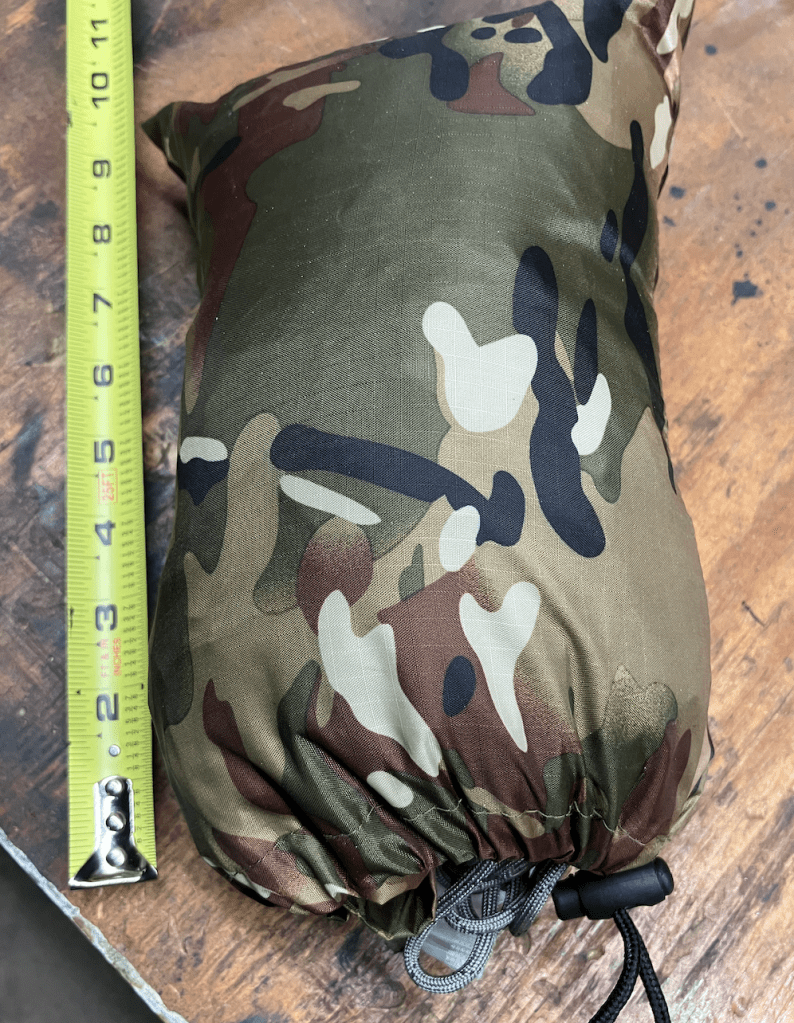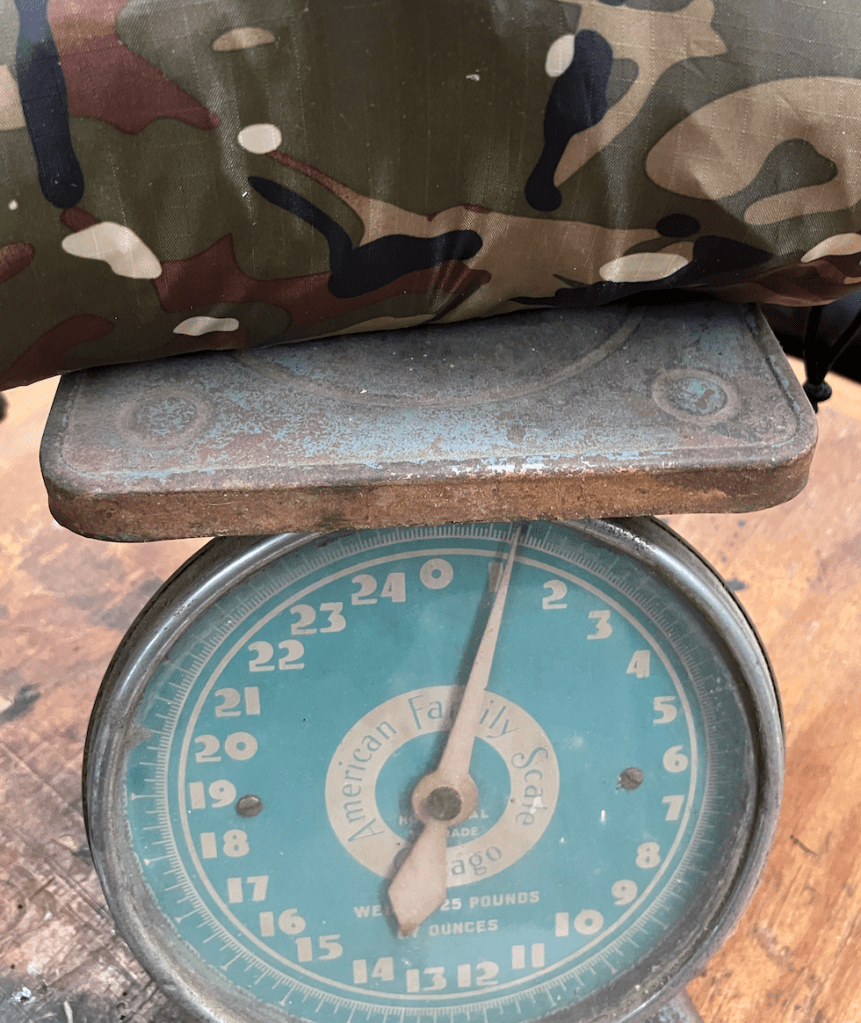
OK, so if my old 2022 gas-burner, AWD Maverick was so awesome, then why did I trade it in and get this hybrid?
Pretty simple. I ordered this Mav about a year ago for one of my kids, and then there were some changing life circumstances and they didn’t need it. So, not wanting to lose my non-refundable deposit, I stepped back and gave the problem some thought.
One, I racked up some serious miles on my 22 over the two years that I owned it. When I traded it in, there was about 55k on the clock. This was due to a lot of commuting to my kid’s university, about 140 miles from here, one way. Therefore, the relatively high mileage was a consideration.
Two. While I loved the AWD on the old Mav, and the 4k tow package with HD transmission was awesome, I rarely needed those capabilities.
Finally, this new truck came factory equipped with a hard, tri-fold tonneau bed cover. For many reasons, this is more useful on a day-to-day basis than an open bed. Also, the hybrid Mavs have gained a well-deserved reputation for excellent mileage in the short time they’ve been on the market.
It was a 99 to 1 percent calculation. I paid a lot for the 1 percent considerations, i.e. AWD and 4k tow, and I could gain on the 99 percent end of things; daily mileage and tonneau cover.
Therefore, I decided to trade my 22 Mav for the 24. After a month of operation, it was a good decision. The 22 was an amazing work truck, and a superlative daily driver, but the hybrid Mav is a better fit on balance. As much as I loved my 2022, that really says something.
All of what I said in my earlier reviews of the 2022 Maverick stands- I won’t revisit those features. You can find them in my earlier posts. Just type in “Maverick” on this site’s searchbar. The Ford Maverick is head and shoulders the best small utility truck on the market. Period. After two years of operation on my 22 model, it was a great value and a no-kidding worker. I routinely hauled 24 bales of hay, heaping truckloads of firewood, and construction materials. This new vehicle will do the exact same type of things within its design specifications, which are identical to my EcoBoost truck, minus the optional AWD and 4k tow package.
Therefore, I’ll talk about the new truck’s features that differ from the old truck. First, let me talk about the Ford tri-fold hard tonneau, which was worth every penny. See below.

This tonneau cover is awesome! It keeps stuff dry as you cruise around- for me, this is mostly bags of animal feed. In the past, I always had to take weather into account when hauling feed. It’s not a good idea to let your feed get wet. In addition, the tonneau doesn’t crimp your style when you need it out of the way. It easily and securely folds up; there are military-style clips and a strut that hold it in place when it is raised. Observe.
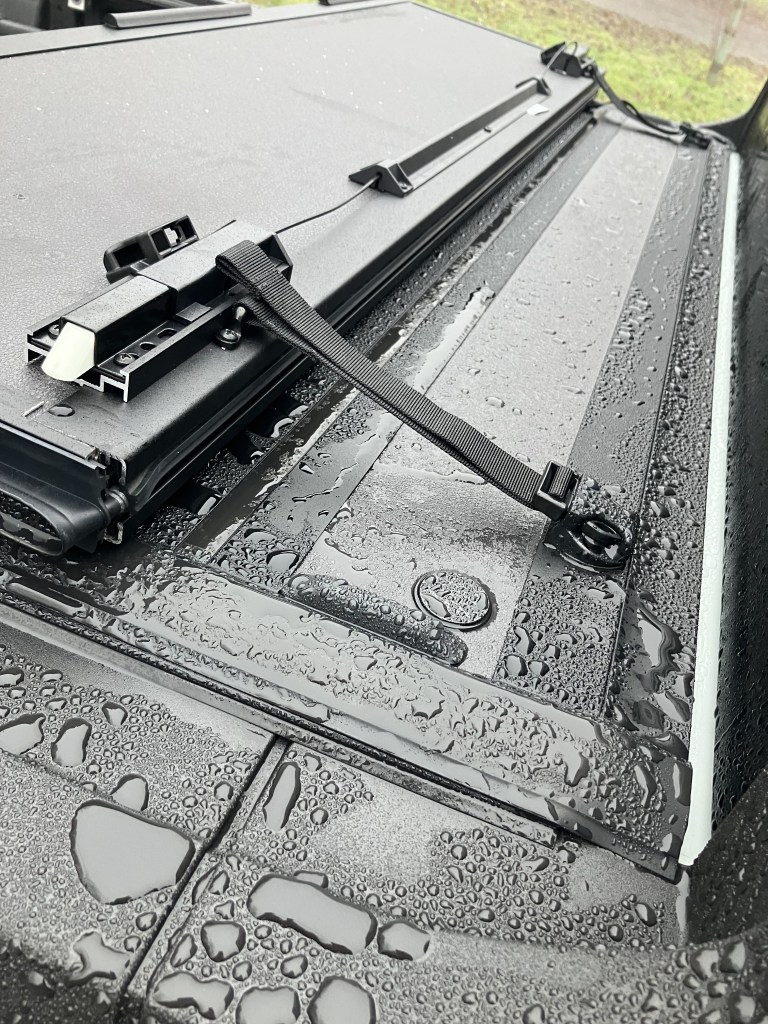
This is very handy. It’s 30 seconds work to enjoy the advantages of an open bed, and it’s the vehicle’s lifetime to use the advantages of a covered bed. Worth every cent, IMO. Here is a pic of standard use around here.

Note that once again I opted for the factory bed extender. This gives me seven feet of useable bed space, and I use this all of the time. I purchased the base XL trim because I’m a fan of steelies on a work truck. This is not a minor feature for me, steel wheels hold up better under field conditions. I made sure that I ordered the floor D-ring cargo hooks and bed cubbies; these are not standard features on XL models. However, they are must-haves for this guy. Also, as the Maverick base is the standard from which the higher trims are built, the base model is easily adapted for these higher trim features. When the shop at Team Ford added the rings and cubbies, I think it took them less than an hour of labor.
It was worth every darn cent! Also, the crew at Team Ford, both sales and service, are top notch. I got a fair deal on the trade in, the process was smooth, and the past two years of service have been a great experience. These people take care of their customers. That can be hard to find.
But I digress. We’re talking about the differences between the two vehicles, the 2022 and the 2024. Let’s discuss the big kahuna; the hybrid drive.
HOLY CRAP. This is astonishing!
It is a real thing, cruising around in all-electric mode; this costs you NOTHING to drive! Right now, on crappy winter-mix gas (which gives you lower mileage), my overall mileage average is 42.3 mpg. Wow. This is a full ten mpg better than my 2022, which had phenomenal gas mileage compared to a sedan, let alone a small truck! The Ford Maverick is the king of thrifty vehicles on the US market, no one else comes close in this vehicle class. Yes, you can point to all-electric vehicles or hybrid SEDANS like the Prius, but that’s an apples to oranges comparison. If you look at small trucks, the Maverick reigns supreme and compares favorably to small passenger sedans.
Also, in the 2024 model, the Maverick comes standard with cruise. The 2022 did not, and I had to go to great lengths to have factory cruise installed. When installed, factory worked great on the 22. However, it works better on the hybrid, which is astonishing. This is, IMO, an outgrowth of how the hybrid operates. While going downhill, the hybrid is an electric vehicle. If you have the cruise set, the recharging electric motor keeps you nailed to your set speed. This is unlike my old EcoBoost, which operates like the standard, non-adaptive cruises of the past; i.e. they’d creep up while you went downhill, and if you didn’t want to exceed your set speed, you’d have to tap the brakes, then reset the cruise. It’s a minor inconvenience, but the hybrid eliminated it. Very nice, and a completely unexpected feature.
For my lifestyle, I need a small, hard-working truck. Period. The Maverick does nearly the same work as a full-size, half-ton truck. The 1500 pound rated haul capacity is the same as a Chevy Silverado, with profoundly better mileage and overall utility and drivability. I know- I’ve owned and operated standard 1/2 ton trucks my entire life, and after two years of the Maverick, I don’t miss them.
The area where a full-size, 1/2 ton truck wins handily, of course, is towing capacity. The standard hybrid Mav is rated at 2000 pounds if you opt for the factory hitch. At one hundred lousy bucks, I did. IMO you are foolish not to pay for the factory hitch, even if you think you won’t need it. It’s better to have a capability and not need it than the other way around. At 100USD, it’s a no-brainer when you order your vehicle.
That 2k tow capability will solve most chores for most people. A good example is the standard Harbor Freight trailer, which is rated at 1750 pounds. See photo below, which is the HF trailer at work with a log splitter behind it on the job site. While this photo was not taken with the Maverick attached to the trailer (this is the Roxor at work), the base hybrid Maverick will 100% tow both this HF trailer and the log splitter that you can see behind it. You can really work this truck if you choose to do so. Well, I bought the Mav to work. As an aside, the HF trailer will easily fit a four-wheeler or lawnmower, and the standard Mav tow capacity will pull either one of those with ease. The Harbor Freight trailer seems custom made for the Mav in many respects. If you buy a Maverick, I’d recommend picking up this trailer, too.

The base hybrid Maverick is a real work truck. Period. I don’t care what some internet experts have to say; they are wrong.
In addition, it is a great, dead reliable grocery getter and people hauler. My earlier reviews stand, and the stakes were raised by the 2024 Hybrid Maverick.
This. This is a vehicle to purchase. Hands down. If you can’t find one, it’s well worth the (long) wait to custom order one.
Five stars. Highly recommended.
